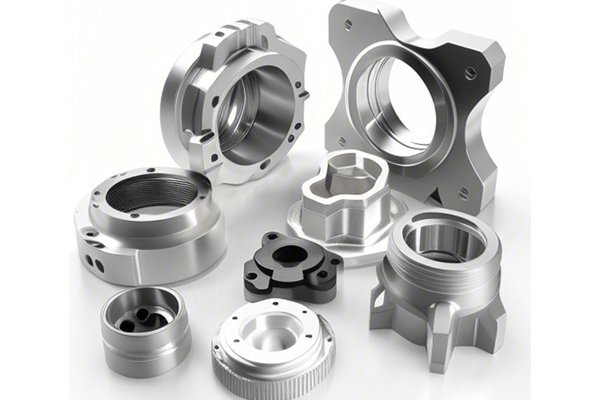Opening: A Paradigm Shift in Manufacturing
Did you know that the global computer numerical control (CNC) machine market is expected to reach a value of over $100 billion by 2025? As pressure mounts on manufacturers to deliver customized solutions swiftly and efficiently, the transformative role of CNC machining has never been more pronounced. This remarkable technology is reshaping the landscape of technical innovation and customization, enabling businesses to meet diverse customer needs seamlessly. But how exactly does CNC machining facilitate this innovative leap? In this blog, we will delve into the relationship between CNC machining and technical innovation, discuss its capabilities, and uncover solutions to modern manufacturing challenges.
—
Understanding the Role of CNC Machining in Technical Innovation
Computer Numerical Control (CNC) machining is a manufacturing process that utilizes pre-programmed computer software to control the movement of machinery and tools. This technology allows for the precise and efficient creation of complex parts that meet the specifications of various industries, from aerospace to healthcare. The benefits of CNC machining significantly contribute to innovation capabilities and the ability to respond to customer demands, such as:
—
Solving Challenges Through CNC Machining
Despite its advantages, companies often face various challenges when looking to enhance their technical innovation through CNC machining. Below are some common obstacles and tailored solutions that CNC technology can provide:
Challenge: Many products today have complicated designs that may be too intricate for conventional machining methods.
Solution: CNC machining can handle complex geometries with ease. High-tech CNC machines are equipped with multi-axis functionality that allows manufacturers to create sophisticated shapes and features. Furthermore, advanced CAD/CAM software can optimize designs for CNC processing, ensuring that complex parts can be manufactured with precision.
Challenge: Managing production costs while maintaining high-quality standards can be daunting.
Solution: CNC machining minimizes material wastage through efficient cutting strategies, essentially reducing scrap materials. Additionally, the speed and accuracy of CNC machines bolster productivity, allowing businesses to produce more with less time and effort, resulting in lower manufacturing costs and improved profit margins.
Challenge: Increasing customer expectations regarding delivery times can pose challenges for manufacturers.
Solution: With CNC technology, manufacturers can streamline the production process. The automation of tasks means that machines can operate continuously, resulting in quicker turnaround times. Additionally, the quick setup capabilities of CNC machines mean that retooling for different projects requires minimal downtime, ensuring that customer orders are delivered promptly.

Challenge: Many manufacturing firms struggle with a shortage of skilled labor, which can affect their productivity and innovation potential.
Solution: CNC machines are user-friendly and require less skilled labor to operate compared to traditional machining methods. By investing in CNC technology, companies can reduce their dependency on highly skilled machinists while training their workforce on operating CNC systems. Continuous operator training programs can help further leverage technology and skills development.
—
Innovations in CNC Machining
The world of CNC machining is rapidly evolving, and innovative applications are enhancing its capabilities. Let’s explore some notable advancements:
The Internet of Things (IoT) is revolutionizing CNC machining by enabling machines to communicate and share data in real-time. This allows for proactive maintenance, reducing downtime, and streamlining operations. By collecting data from CNC machines, manufacturers can analyze performance, predict failures, and minimize disruptions to production.
AI-powered software is now being integrated into CNC programming to improve machining processes. This technology can automate toolpath generation, optimize cutting parameters, and enhance decision-making processes based on data analysis, ultimately leading to improved efficiency and quality in production.
The convergence of CNC machining and additive manufacturing offers exciting possibilities. Engineers can now create parts that combine subtractive and additive methods, optimizing material properties and enhancing design flexibility. Hybrid machining systems leverage the strengths of both technologies to improve functionality and performance.
Modern CNC machining is increasingly focused on sustainability. Environmentally conscious organizations are incorporating eco-friendly materials and reducing waste through advanced machining techniques. CNC machines can be programmed to utilize the raw materials efficiently, leading to lower energy consumption and a reduced carbon footprint.
—
The Importance of Continuous Innovation
As we conclude our exploration of how CNC machining can improve technical innovation capabilities, it’s vital to recognize the importance of continuous innovation in manufacturing. The ever-evolving landscape requires manufacturers to stay ahead by adopting new technologies, refining processes, and seeking creative solutions to meet changing customer demands.
In a global economy driven by rapid technological advancement, CNC machining emerges as a cornerstone of innovation in manufacturing. By offering solutions that enhance customization, speed, precision, and cost efficiency, CNC technology empowers businesses to rise to the challenge of complex market requirements. The insights shared in this blog underscore the importance of leveraging CNC machining to foster technical innovation effectively.
Manufacturers at all levels must consider the implications of CNC technology investments on their ability to meet customer needs and maintain competitiveness. Ultimately, the decision to adopt CNC machining is not just a tactical move but a strategic necessity designed to propel businesses into a future defined by limitless possibilities and innovation.
—






